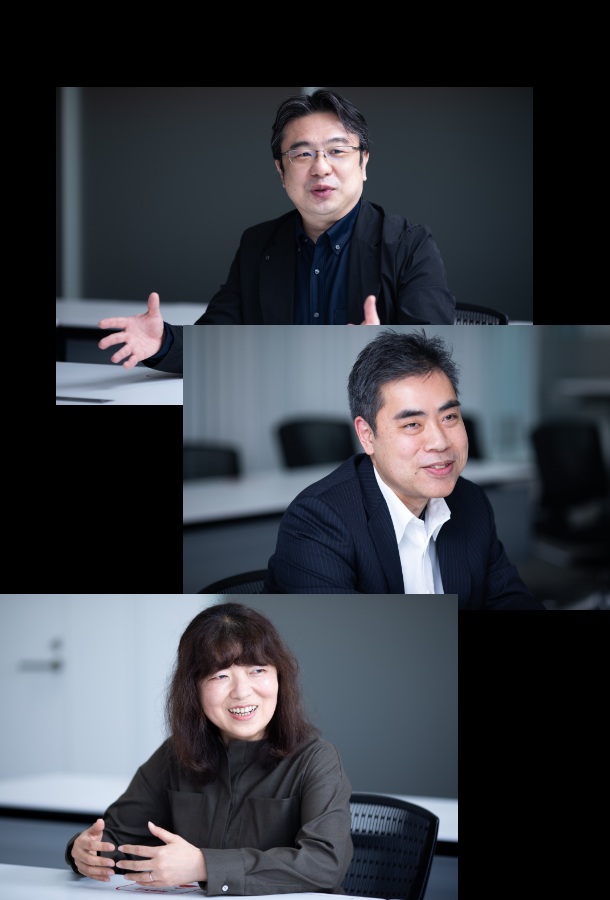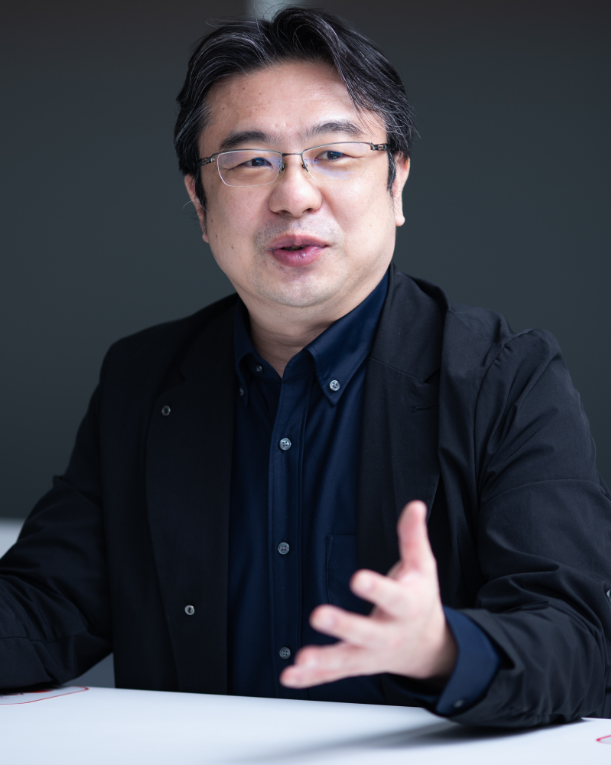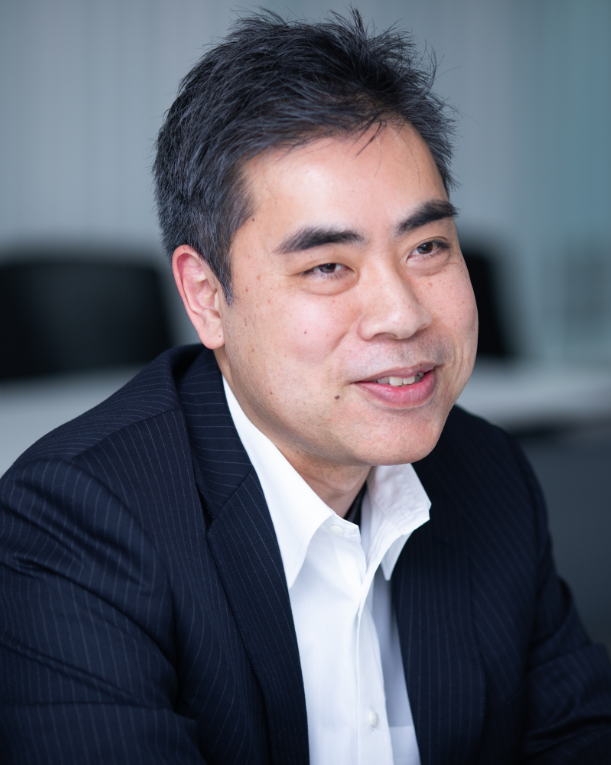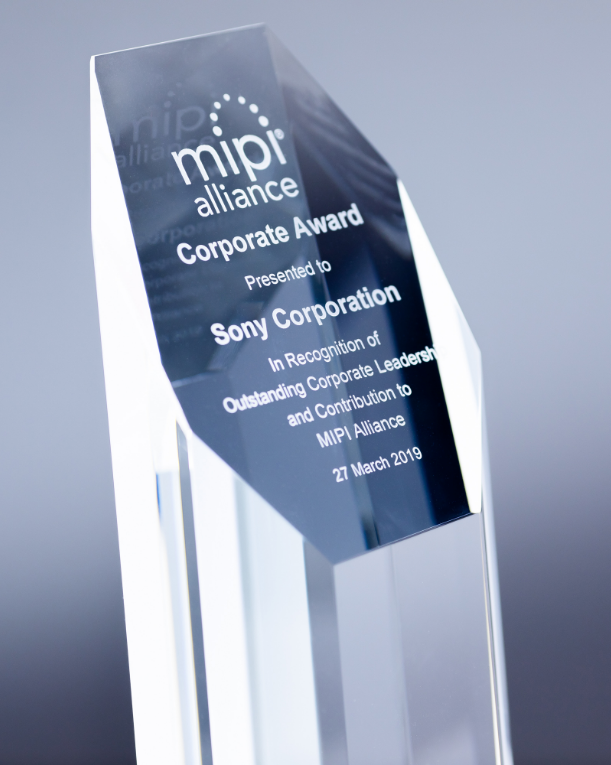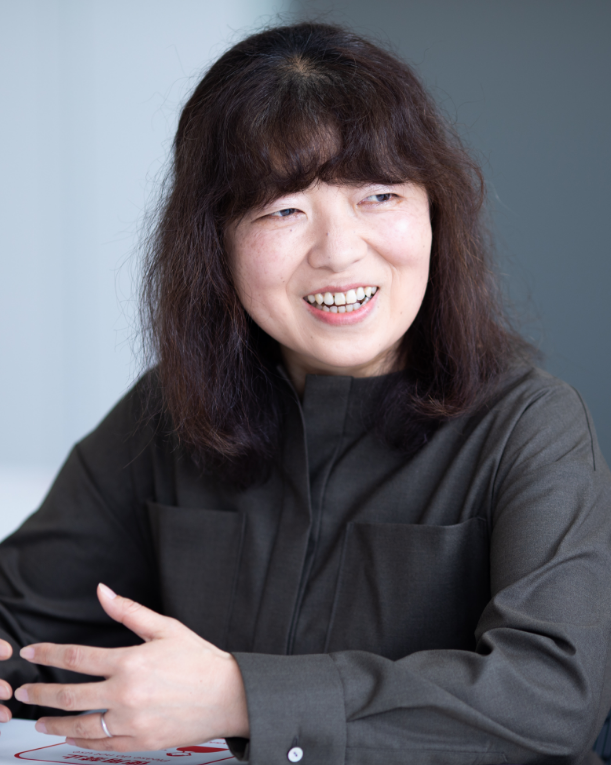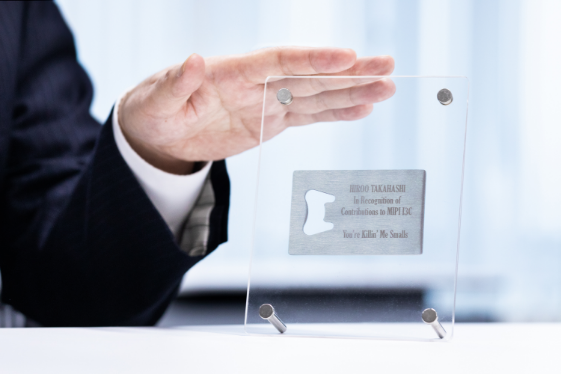Two aspects of standardization: the generalization for better product compatibility and the oligopoly for stronger market control
―― What is standardization, and what does it involve?
Koide:In general, standardization serves as the basis of means, regulations, and standards for market formation and differentiation, defining criteria for evaluating products and technologies or sorting the compliant from non-compliant.
In recent years, a growing significance is attached to the aspect of its being a crucial means to create and expand a market, known as the “nonmarket strategy,” in which a company creates a business environment that is advantageous to them by engaging other companies with a clear intention to convince them that the company’s technology has potential for common good.
Moreover, standards can be a foundational factor of laws and regulations, complementing them by providing specific methods to meet the requirements of such laws and regulations. We need rules to make the world a better place, and standardization plays a crucial role in making these rules.
―― What exactly do you do?
Koide:I work in the standardization for the mobility area. Products in this category, such as automobiles, are strictly regulated by laws and regulations because of their immediate implications to society, the natural environment, and economic activities as well as to people’s lives and assets. Therefore, products that fail to comply with these laws and regulations cannot even make it to the market. On top of the compliance as a prerequisite, safety must be ensured. This “safety” requires cooperation of diverse stakeholders, from those who are involved in car manufacturing, automotive components, and transport infrastructure such as road systems to road users and local residents. My responsibilities include identifying the rules to be established in order to ensure safety as well as considering the domains and technology relevant to the rules where SSS Group can make its contributions and preparing our business strategies ready for the implementation.
―― How do you handle the differences in traffic rules, required performance of vehicles, etc. from one country or region to another?
Koide:It is very complex. In the USA, for example, there are federal rules and, also, state rules. The rules are different even between Japan and China. Ideally, we should have a comprehensive view over the entire field, but this is extremely difficult to achieve. It is necessary to have a critical perspective to identify which part is more relevant to our businesses. For this reason, we must keep watching the global landscape, and not be focusing on one specific locality.
Takahashi:I am involved in the standardization concerning the telecommunication of mobile devices like smartphones and automotive mobility devices. The telecommunication requires the transmitter and the receiver of signals use the same language, and standardization is essential for this reason. The telecommunication subgroup is standardizing the protocol, process, and electronic signal concerning the communication between an image sensor and processor.
―― Has the idea of standardization been around for a long time?
Takahashi:Standards already existed about 2500 BC in Egypt, when they were constructing pyramids. Such a gigantic structure as a pyramid could not be constructed so accurately without having a standard size of one block of stone. From the Egypt era to early 20th centuries, standards were created and managed by national and regional governments. Non-governmental standardization began in the wake of the automotive industry. Then, in about the 1980s, standardization became a tool for corporate strategies and competition.
For example about PC, there was a major CPU manufacturer, and they realized that their productivity would suffer if they developed communication protocols themselves for connecting between their CPUs and the chips known as the northbridge and southbridge. So, they made the communication protocols to be an open standard. This immediately caused price wars in the connectable devices such as hard discs and memories. That is, the open standard allowed anyone to develop products connectable with their CPU, and manufacturing moved to lower-cost regions. As a result, the prices of peripheral components plummeted, whereas the prices of the CPUs were maintained high. This was possible because the CPU manufacturer had standardized the high-speed interface for connecting with CPUs based on their own products, and it allowed them to control everything about the CPU ecosystem in the market. As you can see, the standardization of telecommunication interfaces is closely linked with corporate business strategies, and for this reason, it makes an enormous difference whether the in-house technology is adopted to the standard that is applicable to all communication devices.
Koide:Open interfaces can lower the market threshold to other players, while the core technology can be kept closed to others for protection. In this sense, standardization can be a key tool of corporate strategies. In other words, standardization has an aspect of generalization, as in making technology open and letting it become the standard, and at the same time, it can be used to exclusively control the market.
Akahide:Like Takahashi-san, I am working on the standardization of image sensor interfaces. This is intended for image sensors for industrial applications. I was invited to work with the Japan Industrial Imaging Association (JIIA) on standardization because they wanted to standardize our SLVS-EC, a high-speed interface which SSS Group developed.
As mentioned earlier, interfaces would be worth very little if they were not adopted widely. I believe that this standardization is very important for us, too, so that our high-speed interface will be diffused. At the same time, it is also important to develop a strategy for the future success of the product by determining what to be made open and what should be kept closed.
Important information cannot be had without participation, and we delved into the unknown territory of standardization
―― How did you get involved with standardization initially?
Koide:It has been only about 10 years since SSS Group started operating in the mobility area. The standardization office, however, was only established in 2019, not from the beginning of this business. As we learned the business norms and customs in the industry, it became increasingly important to be involved in the activities to establish international standards. It was out of the necessity to strengthen our organizational presence in the standardization efforts that we launched the office.
Previously, I was involved in the standardization of the connection interface to PCs. Before that, I was a PC design engineer. The PC industry was dominated by some platform giants who controlled the standards, and someone like us had to maneuver in very limited areas. I had my own ideas for certain products, but these could not be realized in this power struggle, and it was very frustrating.
You might assert that the feature you came up with was good and met the market needs, but this idea would not be accepted without having a means to back it up. Confronted by this situation, I recognized the importance of having standards that distinguished good ideas from bad. There is no progress to be made if anyone can assert that their idea is better.
This experience made me think that, though I was an engineer, there might be a good chance in rule-making that we could stand on the same plane with the giants who were stronger in the market. We could negotiate as equals and draw the market advantage toward us. This was how I initially started standardization initiatives.
―― Moving from sciences and engineering to a more humanities-oriented operation, how did you manage the changeover?
Koide:Verbalizing the ideas which we want to realize and negotiating them with the industry stakeholders—this was something I had never had to do as an engineer. It was extremely difficult in the beginning. However, I think engineering and standardization are not exactly mutually exclusive, for there are things that can be understood better from an engineer’s viewpoint. Like me, both Takahashi-san and Akahide-san used to be engineers.
Takahashi:I was in the development of communication technology since I joined the company. At first, I worked on the data communication technology for the AIBO, robotic puppy, then, I did TV signal receivers. After this, I came to the Semiconductor Business Division and eventually became the MIPI M-PHY development leader. This M-PHY was the latest interface at the time, and its standards documents were next to impossible to understand. They are all written in English, and key parts do not have illustrations. Everything is explained in words, making it difficult to understand it precisely. Someone had to go to the MIPI conference and have these explained, otherwise progress could not be expected in the development. I was chosen for the task, which is how it all started in my case.
There is, of course, an email inquiry system, but our inquiries had no responses. I found out much later that, within MIPI, they had an unspoken rule of not dealing with inquiries from new commers.
Standards Developing Organizations(SDO) are usually run mostly by volunteers. The members have their main jobs while making time for developing standards. Therefore, it is customary that they do not deal with people who are not involved in developing standards. So, even if we had a reply, it would simply tell us to read specific pages of the document, which would not be helping because those would be precisely the sections we had trouble understanding. Once you become one of them, they are very helpful, but otherwise they are not. I learned it hard way. Since SSS Group realized that we had to be properly integrated in their efforts, I joined the alliance. Their activities mainly took place in Europe and America, so it would be after midnight in Japan to attend their remote meetings. Obviously, it is all done in English. It has to be done in meetings, as opposed to through correspondence, because a technical question usually leads to further questions. You have to be attending the remote meetings regularly. Otherwise, you will end up asking a question which, you will be told, was already dealt with years earlier. In the beginning, I was quite reluctant about attending these meetings, but I gradually built rapport with other members. Eventually, the hard work paid off, and SSS Group earned recognition by the MIPI Alliance. And today, I chair the committee.
Akahide:Like the other two, I was also in the development and never even imagined that I would be taking part in standardization activities. We were aware of the importance associated with standardization, but the Imaging System Business Division, to which I belong, had never been anywhere near it. Then, we received a request from JIIA to participate in their standardization efforts. We had to send someone to represent us, and I was found to fit the bill because I was in charge of SLVS-EC at that time. While Takahashi-san was appointed to the chair post as a result of his diligent work, I was automatically made the chair simply because it was SLVS-EC that they wanted to standardize. I had to lead the committee while having no previous knowledge about JIIA or its regulations. Meanwhile back in the Business Division, for the lack of experience in standardization, it was difficult to get everyone on board. In fact, some division members were quite skeptical about our efforts, based on some negative information about the risks involved in standardizing in-house technology. It is true that putting out information in the public domain may result in being outperformed by competitors. So, I spent a lot of time and energy to explain to, and be understood by, colleagues in the company that the standardization had benefits to improve our corporate value and technical advantages.
―― Should standardization be established after the products are finalized?
Akahide:It depends on individual cases. In my case, we already had a finished product when we embarked on the preparation of the standards. In a case like this, the technology must already be developed to an extent, and proposals would be made to the standardization committee based on the previous in-house decisions about what should be made open.
Koide:Technology advances fast these days. It is well possible that standards which were developed for three years following the completion of a product were already too old to be relevant. Standardization of technology is more advantageous if they are established sooner. There is a growing trend that standardization is initiated before a product launch, having a clear distinction between open and closed information already established during the development phases.
This being said, standardization is something no one corporation can achieve by itself. It is a team effort. Naturally, there will be opinions offered by competitors, so it is important to be prepared and respond quickly. The key to a good business strategy is to have the core technology, which will never be disclosed, and, for the rest, determine to what extent information can be made accessible to others.
―― What was the most difficult to deal with in your standardization initiatives?
Takahashi:Like Akahide-san experienced it, I also had difficult times due to a lack of understanding from the company side. As it is more often the case that our mobile technology and standards are developed simultaneously, and circumstances change constantly, these conditions can alter the scope of information that can be made open. In the standardization meetings, my presentations of such in-house standards were often countered by alternative ideas because I was a new face. Meanwhile, the company was going ahead with the in-house version, so I had to try and persuade the members of the meeting to accept our proposals. However, those days, my assertions had little persuasive power because many of the MIPI Alliance members represented major companies. If the chair offered something he or she came up with theoretically, everyone would be swayed toward it. Then, all I could expect was my boss’s dissatisfaction back in the company.
―― Would you say that camaraderie is important to be accepted?
Takahashi:I would say yes. Processor vendors and image sensor vendors come from different perspectives and often clash. For image sensors, the lighter it is, the better. Whereas, processor people want image sensors to have more processing capacity so that their processors would be able to have more run modes and options for potential software additions in the future. They then have to fight to secure features in differentiating technology, which are more valuable. Facial recognition, for example, they would go, “we will do that.” They prefer to keep their differentiating technology on their side while leaving the image sensor people to deal with other tedious processing issues. Since these processor people are tactical to use the power of the majority, we can only try to be included, make contributions, and gain recognition, instead of confronting them, in order to succeed. So, we need to do those little things like offering proactive support to the chair by answering even insignificant questions that no one else want to answer, being a regular and active participant in every meeting, and building rapport with others by joining the post-meeting drinks and small talks. In this alliance, being loud does not get you very far. You have to be able to offer technically correct answers and recognized to be an expert in the field. Long-term commitment is particularly important, and non-committed people are never accepted. But when you are accepted as one of them, they tend to appreciate your technical contributions and recognize you.
―― What is difficult about being a chair?
Takahashi:When you are a chair, you will receive many proposals from different people. Sometimes, the ideas proposed are in conflict with the ideas we are going to propose. When this happens, I find myself in a dilemma between my positions as a member of SSS Group and as a chair of a MIPI committee. In any case, my decision will be based on safety being the top priority because the mobility area has direct implications to people’s lives.
Koide:The mobility industry in Japan has a long history of development, and thousands of people are involved. It was tough, coming from outside, to prove to them what contributions Sony could make to the industry.
Meanwhile, it is also important to have the standards understood by the company. In order to develop business strategies, it is not sufficient just to describe the standards. You need to have an in-depth perspective and consider the significance and value of the standards, social and industrial challenges, and even implications to the business management. It was a demanding learning curve for me to have such a perspective.
―― How did you overcome those challenges?
Takahashi:Building rapport is important, but also important is developing a win-win relationship. I was involved in the standardization for televisions before, and there was a time when Sony almost monopolized relevant patents. As a result, other manufacturers shunned away from the standards because every product would cost them some license fees. Ideally, everyone should have their share in it. Behind the members, there are engineers of their companies, the intellectual properties department behind them, and the patent office behind them. There are a vast amount of time and an incredible number of people involved in the technology development. This is why it is important to respect other members’ stances and find a compromise sometimes. Standardization is a time-consuming activity. Do not try to win on everything. Give way to others where you can, but make sure that you secure the crucial part. A give-and-take attitude and a good sense of negotiation—these are what you need.
English was another challenge for me. Only one or two ideas make to the final decision for the mandatory requirements of a standard, which means all others are losers. So, discussions turn into fierce arguments toward the end, becoming increasingly complicated. As a chair, I have to control the discussion and reach an agreement even in such a situation. I listen to and direct these opinions and offer mine, too. To manage all these in English, I find it difficult even today.
Akahide:In my case, the coordination within the company was the difficult part. Although I represent the company with the committee, I cannot give an immediate answer about some matters without putting them to the company’s deliberation first. Internally, there are many people involved, and it took particularly a long time to determine the company’s approach to patents, due to which I had to delay my responses to some related questions. This eventually became an issue in relation to making SLVS-EC an international standard. Given that many committee members coming from the machine vision domain were CEOs, as they tend to be small companies, they must have been so frustrated, unable to understand why I could not give answers straightaway or why it took so long to get one. All I could do was to explain the situation to JIIA board members, who sometimes helped me by mediating with other associations.
Koide:I believe that the efforts have been fruitful, in that we started from nobody in the mobility industry and achieved a certain level of recognition. There are no other ways than diligent negotiation, participation, and contribution to be accepted. I think I was overcoming obstacles one by one, like the experience of the other two.
In a world which is more and more complex and uncertain, standardization will be a guiding star for businesses
―― What will be your next step?
Koide:The world is growing more complex, and the COVID-19 pandemic is causing more uncertainties. Against this backdrop, there are serious discussions in progress about digitizing road systems, realizing zero-emission vehicles, and so on. The mobility industry is now experiencing a major social paradigm shift. At times like these, what we have for solidarity is order and rules to attain a better world. It is very important to understand these order and rules without prejudice, and to do this, we must engage with the world outside our boundaries, observing and understanding the world from their point of view. I believe that the activities with the mobility industry, including the initiative for developing the international standards, are valuable for me in this sense. For I am engaged in activities for the mobility industry, providing society with safety and security should be my priority. I will therefore continue my best efforts in this standardization initiative while also contributing to the business growth of our company.
Takahashi:For me, it will be making appropriate rules. There is a well-known episode about the washing machines. In 2001, Singapore suspended importing Japanese top-loading washing machines with a spinning drum. The reason for this was that these products did not comply with the international standards. They surely complied with the Japanese industrial standards, but not the international standards, which were based on IEC standards for front-loading single-drum machines popular in Europe and America. Rules have the power to control. As a chair, I would like to pursue making rules that are appropriate and that do not work against SSS Group.
From a more specific viewpoint, there is the issue concerning image sensors. They are increasingly sophisticated that captured image data can be edited easily, boosting the added value of the sensors. However, there was a problematic incident. When a major earthquake hit Kumamoto, someone uploaded on social media a fake video footage of a lion set loose from the local zoo, which many people believed. Security will be important about camera information in the future, and it is necessary to be able to verify the authenticity of images. I hope that new standards will be established to help prevent fake images such as this from being circulated.
Akahide:Joining the SDO has made me realize that everyone has high hopes for SSS Group. My next step will be dedicated to the standardization of our technology and, also as a vice leader of the Global Standardization Advancement Committee, I should be making contributions to the machine vision sector.
―― What would be your next challenges?
Koide:Safe society with zero road accidents is a never-ending challenge, and an ultimate theme, for those who work in the mobility industry. I would like to play a part in pursuing this challenge and attain the safe and secure society. I will be trying harder to pursue collaborations with the industry and activities of standardization so that our products and technology will be a vehicle to achieve that goal.
To make it happen, I should expand the circle of like-minded collaborators and further strengthen our proactive initiatives of international standardization.
Takahashi:I would like to be part of the efforts to make the world a more convenient and safer place. Image processing has conventionally been developed based on the sensitivity of the human eye, but images intended for machines to recognize will make it possible to raise the frame rate for processing. Then, there will be a need for high-speed interfaces. I would like to be involved in the development and standardization of such interfaces, hopefully extending my involvement to the implementation in image sensors and installation in on-road vehicles.
Akahide:As Takahashi-san mentioned it, speed is a key factor in the machine vision sector. I believe that SLVS-EC is valuable technology in achieving this objective. I would like to see SLVS-EC as diffused as it is comparable to the MIPI’s initiatives, and I will continue my efforts in standardization to make it an easy interface for our clients to handle.
